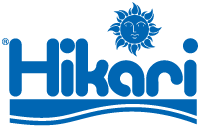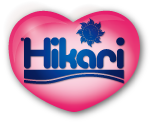Your aquatic pets spend their entire life in an environment you created for them. What you feed them will directly impact this environment and therefore their health. Use these guidelines to find the best Hikari diets for your pet, and how to effectively and efficiently use them.
Fish Type
Recommended Daily Diets
Feeding Instruction
Guppies
Smaller Tropical Fish (Tetras, Mollies, Platies, etc.)
FANCY GUPPY
MICRO PELLETS
Micro Pellets and Fancy Guppy are slowly sinking, soft granules full of essential and desirable nutrition. Each granule is covered with a very thin Micro-coating™ that locks the nutrition inside to eliminate the chances of clouding, staining or coloring your aquarium water. These slowly sinking pellets will allow fish at all levels of the aquarium to easily get their fill!
Feed two to three times daily the amount your fish will completely consume within a few minutes.
All kinds of small & medium sized tropical fish in community tank
MICRO WAFERS
Another Hikari first! A slowly sinking, easily devoured, miniature (micro) wafer, specifically developed for most community tank inhabitants. Unlike ordinary flake foods, this wafer shaped diet won’t cloud your water or dissipate during feeding. Rich in Spirulina and Astaxanthin, Micro Wafers helps you keep your aquatic pets in tip-top condition!
Feed two to three times daily the amount your fish will completely consume within a few minutes.
Discus
DISCUS Bio-Gold
*For aquatic turtles, we recommend Turtle Sticks or Saki-Hikari TURTLE.
Never overfeed! Remember, feeding less is always better than feeding too much.
Always control the amount fed so there is no leftover food after the feeding period. If you find leftovers, remove them immediately to avoid water quality problems.
For new environments, please reduce the feeding amount until your filtration system has completely cycled and developed adequate bacteria levels.
More frequent smaller feedings can improve your chances of success and will bring more rapid growth.
If anything unusual happens in your aquatic environment (a sudden water temperature change, unstable water quality or illness) you should stop feeding completely or reduce the amount fed until the condition is corrected or the fish appear to be eating normally.
Tropical fish may resist a new type of food when changing their diet, continued use will ensure acceptance.

